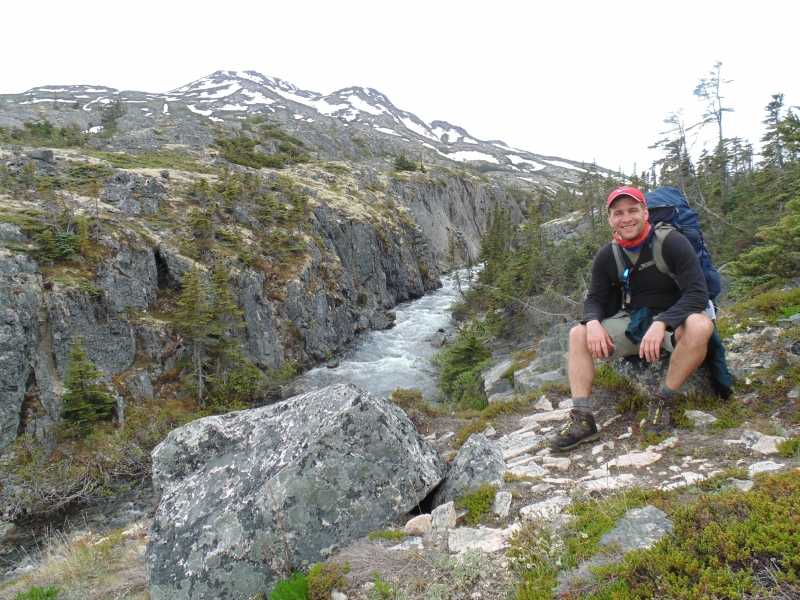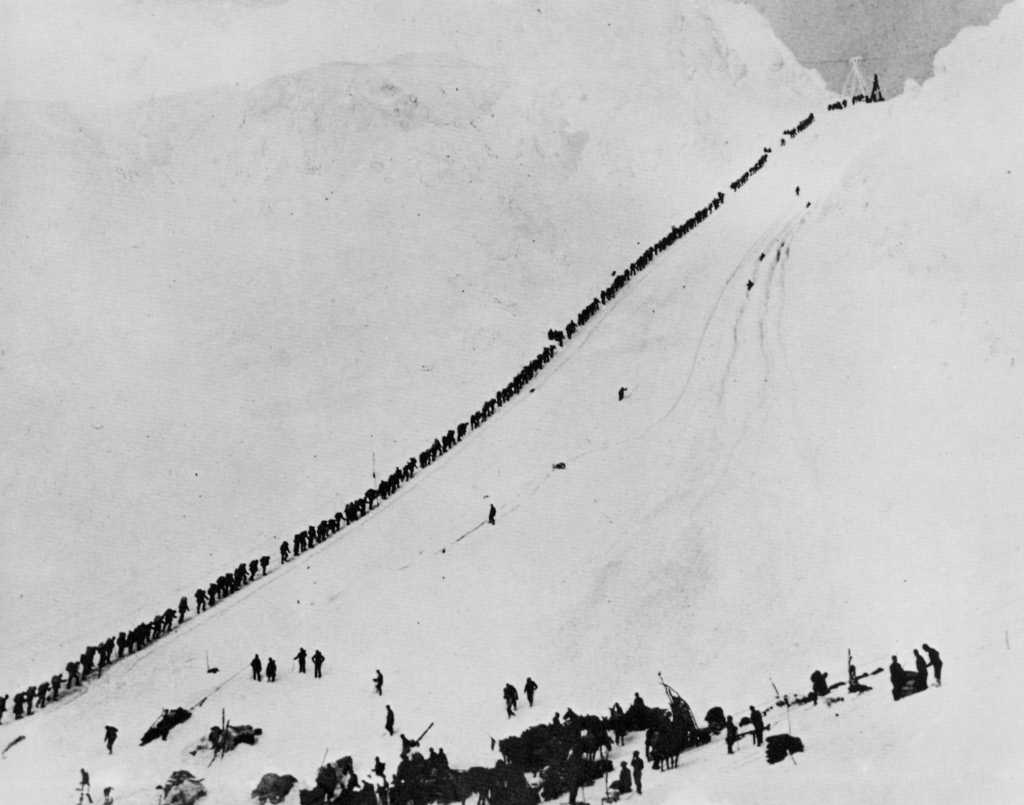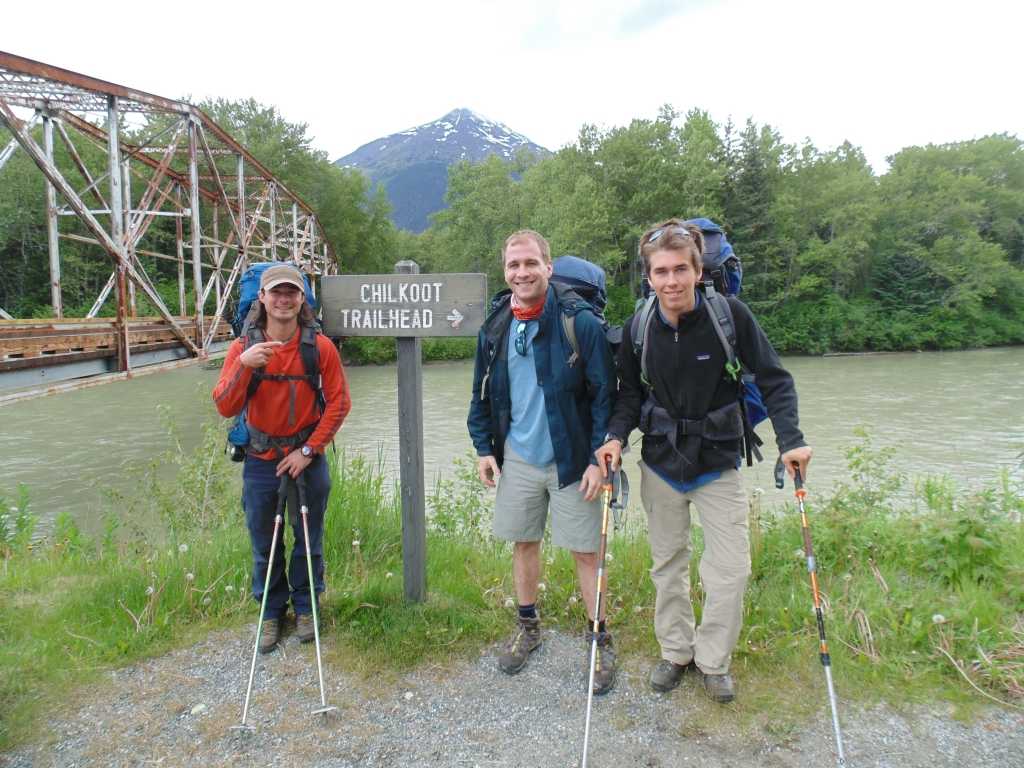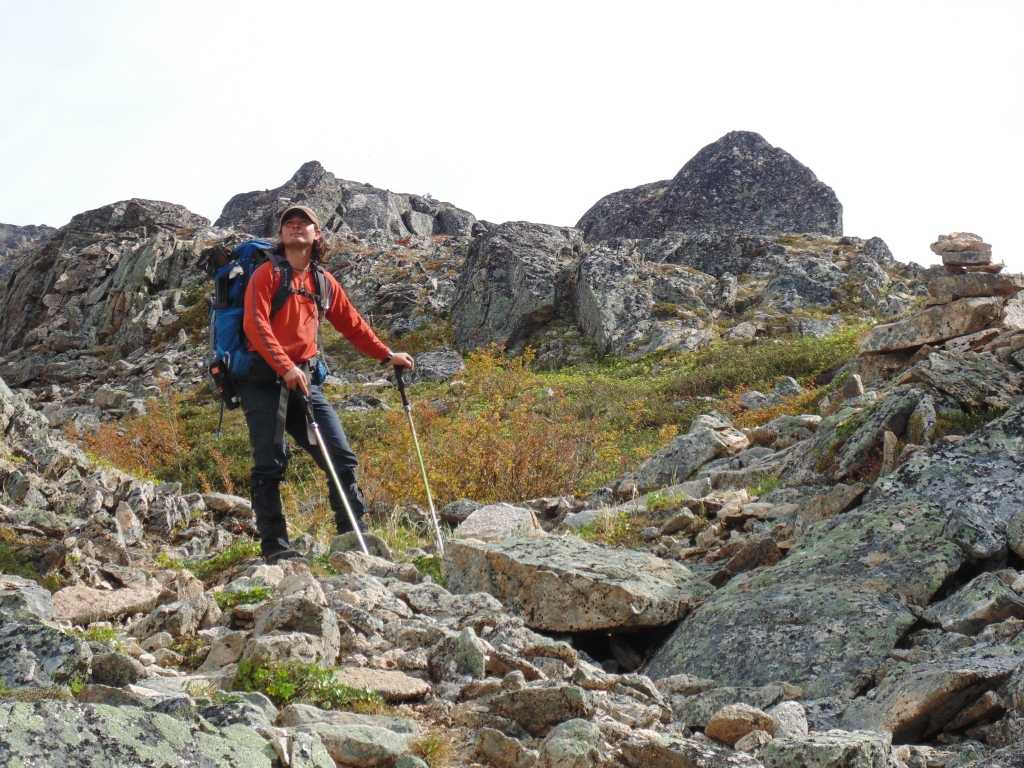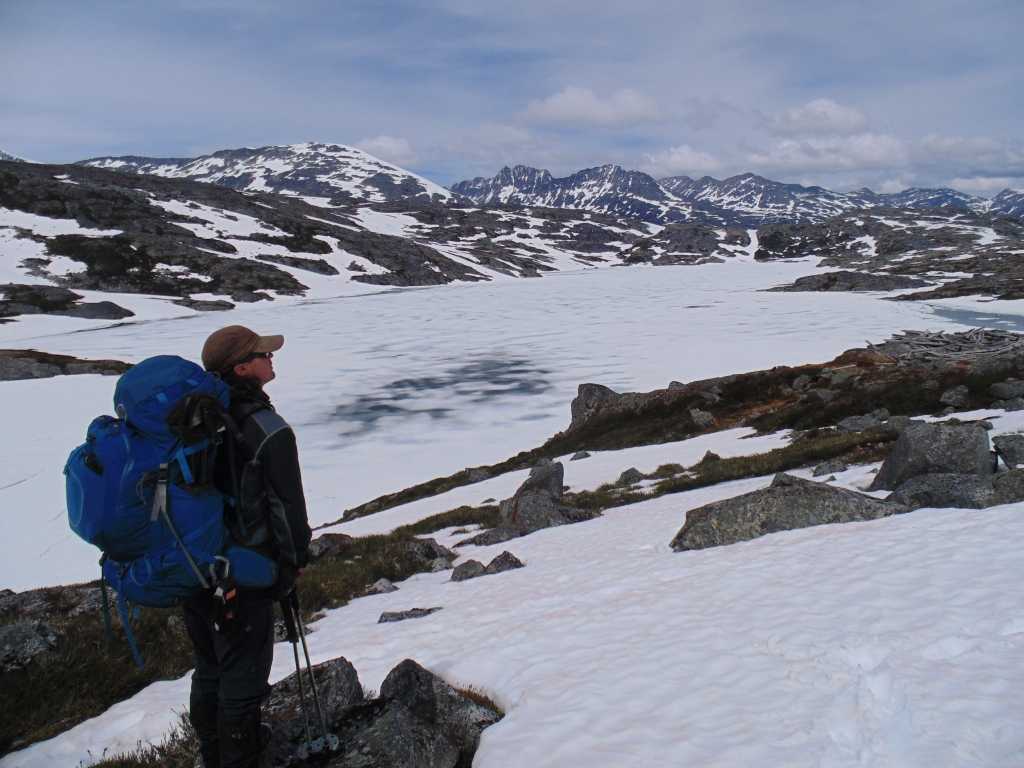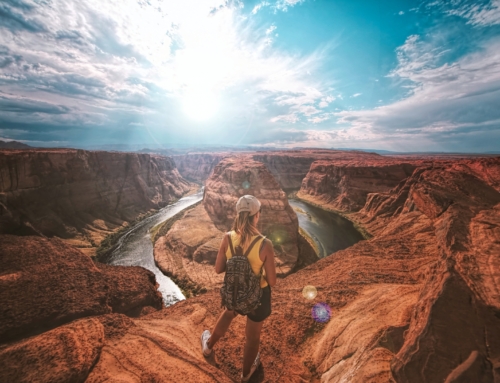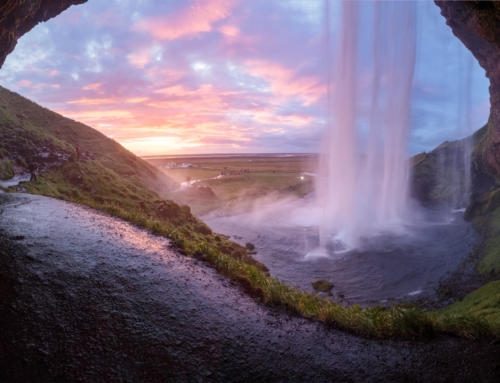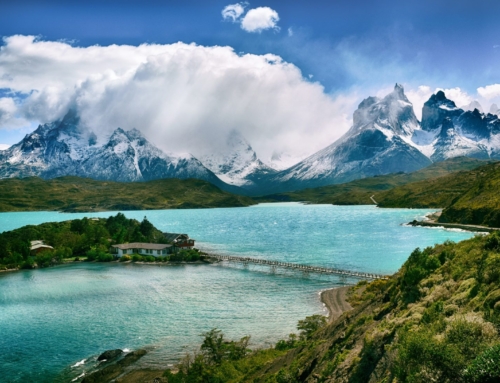In Search of Gold: Hiking the Chilkoot Trail
It was 1897 in a creek three hundred miles south of the Arctic Circle in the heart of Canada’s Yukon Territory, when gold was discovered near the town of Dawson City. Soon after, tens of thousands of would-be miners from across the world set off propelled by the prospect of riches. I was so inspired when I first read the story of the Klondike Gold Rush. I dreamed about what it must have been like on that grand adventure all those years ago in the search for Klondike gold. While you unfortunately can not travel back in time you can experience the same path that many of the miners took to Dawson City. In 2013, I did just this and it was one of the greatest adventures of my life.
Hiking the Chilkoot Trail
The journey to the Yukon, for many, began in Dyea, Alaska— home to the start of the Chilkoot Trail. Carved into the Coast Mountains on the border of Alaska and British Columbia, the thirty-three mile Chilkoot Trail winds through two national parks and takes visitors back in time to experience the history and adventure of one the last great gold rushes.
For me, my Chilkoot Trail adventure began in Whitehorse, the capital city of the Yukon Territory, where I met our guides, Eliel and Fabric. Together we drove to Skagway, Alaska, the coastal town perched at the northern terminus of the Lynn Canal, the world’s largest fjord. Here, we took a quick stroll through the city and picked up my Chilkoot Trail permit at the National Parks trail office. Then, it was on to the one-time boomtown of Dyea— a quick ten minute drive from Skagway— where we made some final adjustments to our packs at the trailhead and set off onto the Chilkoot Trail hike.
It was a beautiful day on the Chilkoot Trail, seventy degrees and not a cloud in the sky. Right from the outset, I could tell that this trail was special. Our hike began under a canopy of lush coastal rainforest along the rushing Taiya River that paralleled the Chilkoot Trail. Suspension bridges, waterfalls and narrow plank boardwalks over swampy water were ever-present on our first morning. We soon reached Canyon City Camp where we broke for lunch amongst Gold Rush-Era building foundations, rusted-out restaurant stoves and an old boiler, reminding us of those who set camp here a century before.
From here, we hiked up the side of a sweeping green valley and traversed sub-alpine forest through the ever-changing vista of sky-high mountains and spectacular hanging glaciers and eventually arrived in Pleasant Camp. Briefly, we rested here before our relatively flat hike to Sheep Camp, where we would sleep for the night. Sheep Camp was the last campground on the American side of the Chilkoot Trail and the perfect starting point for the ascent up the infamous Chilkoot Pass.
After waking early and eating breakfast, we left camp just before 6:00 AM. Climbing through coastal forest, past the tree line and into alpine tundra, we made our way towards The Scales, a mile-long gulley. During the gold rush, the stampeders were required to bring enough gear to ensure they would survive the frigid Yukon Winter. It was at The Scales that the stampeders were required to weigh their gear for the Canadian Mounties.
On our ascent up Chilkoot Pass, we marveled at the Gold Rush-era artifacts discarded along the Chilkoot Trail. Everything from old tin cans, to copper wire, to remnants of wooden structures dotted the trail. Near the top of the Chilkoot is the infamous Golden Staircase, the most difficult section of the entire hike. It began as a steep shale slope requiring the use of our arms to surmount large boulders, and changed into a snow covered shoot, which required several switchbacks to reach the summit. Here, we paused and enjoyed the sprawling scenery. It was hard to imagine the innumerable trips— and superhuman grit— it must have taken for the stampeders to cross Chilkoot Pass, often with two-thousand pounds of gear in tow.
The summit of the Chilkoot Pass marks the international border between the U.S. and Canada. On the southeastern side of Chilkoot Pass lay a pile of preserved prefabricated boats, which were left behind by a stampeder during the gold rush. A few yards from the summit was a park ranger station, where we rested and had lunch before our hike past a series of deep blue lakes en route to Happy Camp. Happy Camp is a stunning camping spot perfectly situated on the banks of a rushing alpine river.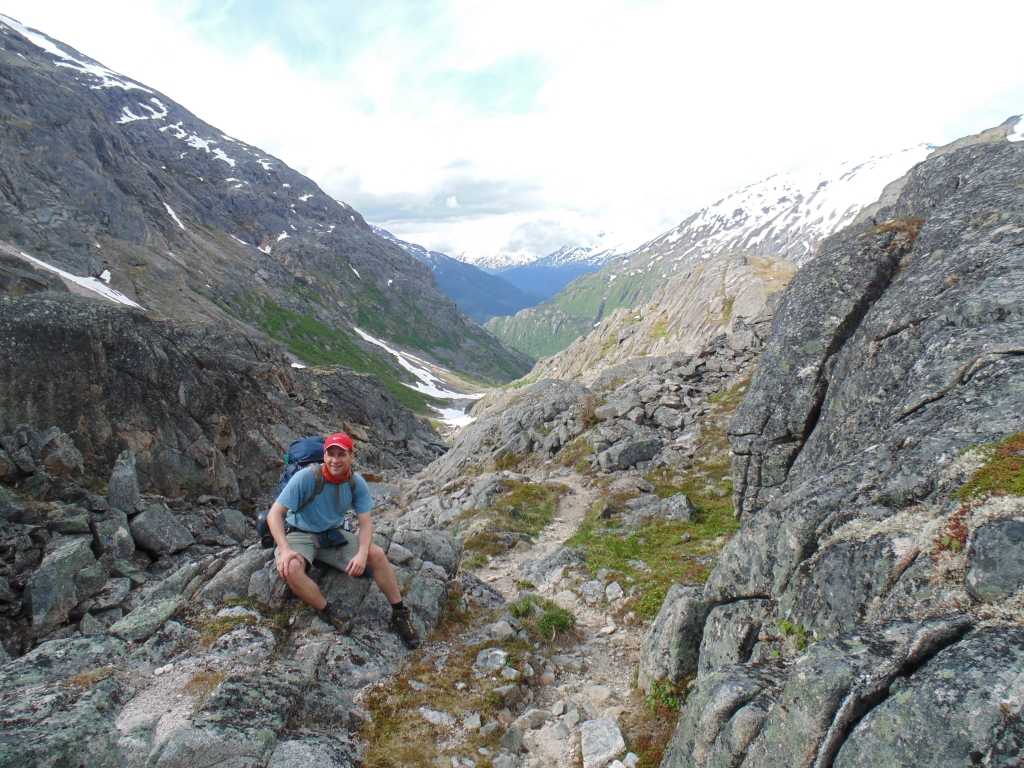
From here, we trailed through treeless tundra and sub-alpine boreal forest on our way to Deep Lake, our camping location for the night. As we made our way to camp, we skirted a ridge above the aquamarine waters of Long Lake, before dropping down to Deep Lake, which is situated on a small hill nestled amidst a pine forest. After unpacking our supplies we took a moment to soak our feet in the crystal clear waters and take in the scenery around us.
We woke early for our last day on the Chilkoot taking in the cool Canadian air and headed to Lindeman City, where we spent some time perusing the books and photos adorning an interpretative wall-tent highlighting the Chilkoot Trail’s colorful history. The path exiting Lindeman City took us along a high boreal ridge offering glimpses of both Lake Lindeman and Lake Bennett.
After thirty-three miles, we finally reached Bennett Lake where there stood only one building, the Saint Andrews Presbyterian Church in a town which was once a gathering place for over twenty-thousand stampeders. I could only imagine what it was like in 1898, as thousands of boats left these shores in what would be a five hundred mile run down the Yukon River to Dawson City. As Eliel, Fabric and I made our way to catch the train, I thought to myself what it would be like to one day come back to Bennett, build a boat, and head to Dawson City in my own search for Klondike gold.
If you would like to learn more about our adventure on the Chilkoot Trail click HERE or if you have ever been to Alaska or the Yukon and have some favorite stories we would love to hear about it, just shoot us an email at info@explorerspassage.com.
I look forward to seeing you on the trail.
Cheers,
Jeff
Jeff Bonaldi
Founder & CEO
The Explorer’s Passage
About Jeff Bonaldi
Jeff Bonaldi is the Founder and CEO of The Explorer’s Passage, a premier adventure travel company. His mission is to provide travelers with the opportunity to transform their lives and the planet through the power of adventure.
Learn more about Jeff’s story and his company HERE.


